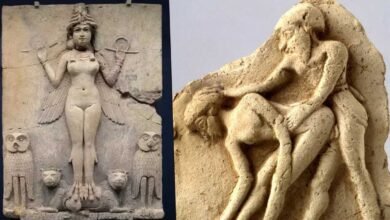Borobudur: A Timeless Journey Through Ancient Buddhism
A Glimpse into the Ancient Buddhist Heritage of Java

Nestled on the Indonesian island of Java, east of Bali, lies a remarkable testament to ancient Buddhism – the Borobudur Temple. This sacred site serves as both a place of pilgrimage for Buddhists worldwide and a captivating attraction for tourists. Notably, it holds the distinction of being the oldest Buddhist temple and ranks as the second-largest globally, only surpassed by Cambodia’s Angkor Wat.
A Mystical Temple Shrouded in Mystery
Borobudur’s mystique is not solely derived from its religious significance but also from the mysteries that surround its construction. This ancient architectural marvel stands in the form of a Buddhist stupa, much as it did a thousand years ago. The temple’s construction involved approximately two million stone blocks, yet archaeologists have never unearthed the quarry where these stones were sourced or processed. Furthermore, the exact date and duration of the temple’s construction continue to elude scientists. Estimates place its construction between the 7th and 9th centuries AD.

The Profound Symbolism of Borobudur
Borobudur’s architecture is replete with sacred meaning. The stupa takes the form of a mandala, a Buddhist model of the universe. Its stone structure intricately depicts the teachings of Buddha, with each tier playing a significant role:
- The First Tier: Symbolizes the world of carnal passions.
- The Following Four Tiers: Depict humanity’s struggle with its own desires.
- The Top Three Tiers: Represent the path towards absolute peace – nirvana. Here, bas-reliefs are absent, as nirvana transcends human imagination.
- The Central Stupa: At the apex, it embodies the ultimate goal of religious teachings – nirvana.

The temple is adorned with 72 small bell-shaped stupas and one large central stupa, housing a staggering 504 Buddha statues and 2,600 bas-reliefs that depict scenes from Buddhism. Legend has it that those who touch the Buddha’s fingers find themselves blessed with good fortune. Borobudur is an architectural reflection of the union of the divine with the earthly, as well as the connection between heaven and earth.

Resurrection from Ashes
The journey of Borobudur has been fraught with trials. In 1006, a volcanic eruption from the Merapi volcano forced the area’s inhabitants to abandon the region, leaving the temple buried under volcanic ash and erased from local memory. It was only in 1814, during the Anglo-Dutch War, that a mysterious monument was accidentally uncovered. Dutch authorities subsequently organized an expedition to excavate the site, completing the effort in 1835. However, the temple was in disrepair, leading to discussions in 1882 about dismantling it entirely and relocating it to a museum. In the interim, the complex suffered from souvenir hunters who carried away parts of the temple. It was only in the 20th century that efforts to restore Borobudur took shape, despite enduring earthquakes and even bombing during World War II. Buddhists maintain that the temple’s resilience is a testament to its spiritual significance.

The most comprehensive restoration, under UNESCO’s auspices, took place from 1973 to 1984. In 1991, Borobudur was declared a UNESCO World Heritage Site, lauded as an exemplar of Indonesian medieval architecture.

Fascinating Borobudur Facts
- Listed in the Guinness Book of Records as the largest archaeological site of a Buddhist temple globally.
- Constructed from volcanic stone without the use of cement.
- Borobudur’s original appearance was far from its current dark grey hue. Archaeological analysis suggests it was initially painted white and adorned with vivid colors.
- Each panel at Borobudur tells a complete story from Buddhist mythology and daily life in ancient Java.
- Borobudur has been named one of the new wonders of the world.
- Surprisingly, Borobudur has no interior space, as it is constructed around a hill lined with stones, lending it an appearance reminiscent of a pyramid.

How to Embark on Your Journey to Borobudur
Reaching Borobudur requires a trip to the heart of Java, just 40 kilometers from the city of Yogyakarta. While traveling by land from Bali is possible, flying to Yogyakarta from Denpasar Airport (Bali) or Jakarta is the most convenient option.
Should you embark on this journey, you can explore Borobudur via guided tours that encompass the following:
- Airport pickup in Yogyakarta
- All transfers during the day
- Dinner
- Accompanied by an English-speaking guide
- Visits to the Borobudur and Prambanan temple complexes, as well as the Sultan Kraton Palace
Discover the ancient shrine of Java on a guided tour and delve into the heritage of bygone times. Borobudur, an architectural masterpiece and spiritual sanctuary, awaits your exploration.


Image from: https://mybalitrips.com
Source from: https://mybalitrips.com




